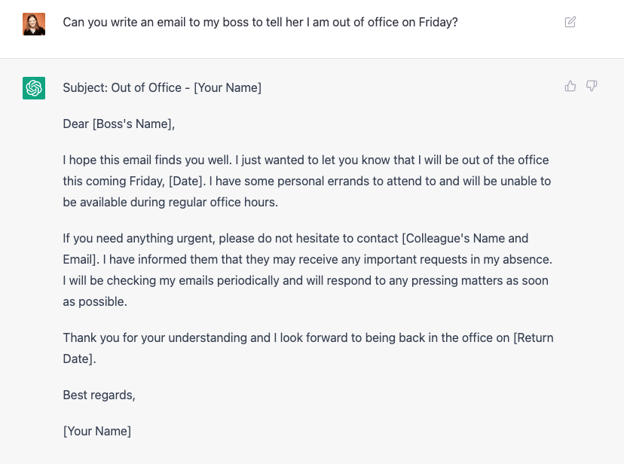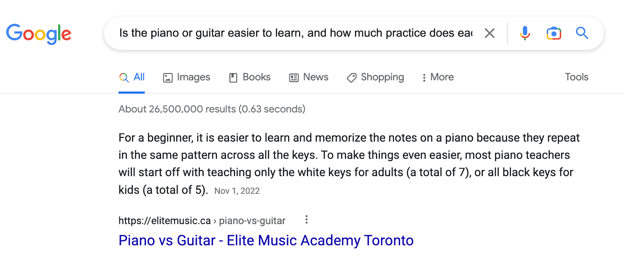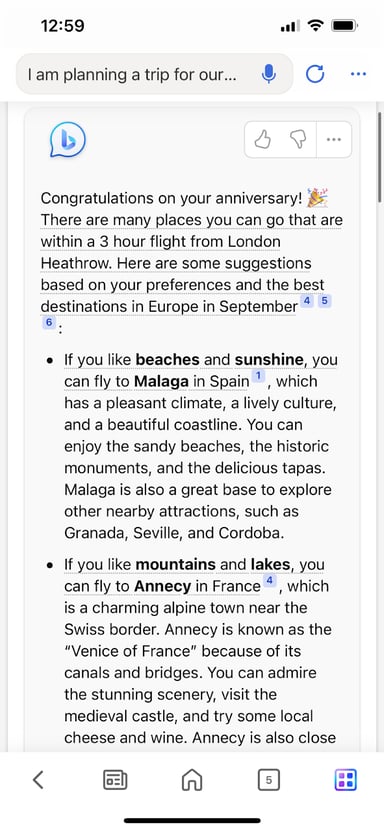Google Sheets templates help you create better spreadsheets while saving you valuable time.
A template knows what you need and offers it without any manual input, giving you the ability to focus on more important things — like translating the data itself.
In this post, we’ll cover every template you’ll ever need to easily and efficiently use Google Sheets for business. That includes templates for project management, reporting, people management, and customer tracking.
You’ll explore:
- Why You Should Use Google Sheets Templates
- How to Find Templates In Google Sheets
- Helpful Google Sheets Templates
Let’s get started.
Why should you use Google Sheets templates for business?
Google Sheets templates are valuable business tools that can be used by teams of any size. Whether you’re a business just starting out or an established enterprise firm, using Google Sheets templates gives you access to countless benefits.
Even if not used as a primary business tool, they can serve to supplement other tools. For instance, you might use a free CRM to track customer information, then use a Google Sheets invoice template to quickly create invoices for each customer.
Let’s go over the top benefits of using Google Sheets templates for business.
Google Sheets templates are free to use.
Google Sheets templates are completely free to use, and they cover a wide variety of needs. You won’t have to spend hundreds of thousands of dollars getting an Excel subscription (or a subscription for another tool).
Everyone who signs up for a Google Workspace account will have immediate working access to these templates.
You have the ability to collaborate.
Google Sheets templates allow your team to collaborate with little gatekeeping. The only thing you have to do is click the “Share” button at the top right-hand corner of a document, and your team members will have access to the file.
You can also limit the collaboration aspect to commenting or viewing only. This is a great option for sensitive documents that only a few people should edit.
Google Sheets templates are intuitive to use.
Using a Google Sheets template doesn’t require much experience with spreadsheets. You don’t need to know advanced formulas and functions to make them work for you.
All you have to do is plug in the numbers and populate the fields. The document will generate a report or calculate a total based on the built-in fields.
Google Sheets templates are customizable.
Using a Google Sheets template doesn’t mean that you’re stuck with its look and feel. You can easily change the fields, the colors, and the fonts using Google Sheets’ built-in tools. This gives you the ability to make your sheets have a brand-specific look and feel.
There’s no data loss.
Another great benefit of using Google Sheets templates? Unless a freak accident happens with Google’s servers, it’s near impossible to lose data.
All changes are stored in the cloud, and Google Sheets includes a version history of the document. You can always revert to a previous version if something happens.
If your laptop crashes or you lose an internet connection, Google Sheets simply freezes the copy until you’re online again. You’ll still want to take a few precautions, such as enabling offline editing and downloading a copy of the document to your local drive.
How to Find Templates In Google Sheets
Ready to find a few templates that you can start using right now for your business? There are two common ways you can find and use free Google Sheets templates.
1. Google’s In-Built Template Gallery
On your browser, go to Google Sheets. Click “Template Gallery” at the top right. Explore the templates to find the right one for you.

You’ll find different templates for your personal, work, and project management needs. Here’s an example of what the Personal template library looks like.

2. Add-Ons
Another way to find free templates in Google Sheets is to download and install the Vertex42 add-on. Here’s how.
- Open an existing Google sheet, or type “sheets.new” to create a new one.
- On the top left menu, go to “Extensions,” then “Add-ons,” then “Get add-ons.”

- Type “Vertex42” into the search bar, and click enter.
- Install the add-on.
- To access the templates, click on “Extensions,” then “Template Gallery for Sheets.”
- From there, click “Browse Templates.”

Here you would find templates that can help with almost everything you need — whether you need to create an invoice, income/expense tracker, or a dashboard to manage your projects.

Let’s now look at some of the free Google Sheets templates you may find useful as you run your business.
Google Sheets Templates
Whether your position requires you to send invoices to clients, track website analytics, or create expense reports, you’ve undoubtedly found yourself working with spreadsheets in some form.
And if you’re anything like me, those spreadsheets can feel frustratingly tedious when you’re under a time crunch.
Fortunately, Google Sheets offers a wide variety of pre-built templates, allowing you to create reports and analyze data faster and more effectively.
The following Google Sheets templates cater to specific categories and allow you to cut hours, if not days, of work in one fell swoop. Let’s go over the best Google Sheets templates you can start using now.
Unlock our collection of 10 customizable Google Sheets Templates.
Google Sheets Templates for Finances
Spreadsheets are a popular tool for bookkeeping and invoicing. Below, you’ll find a curated selection of ready-to-go templates that allow you to:
- Invoice clients
- Maintain an annual business budget
- Generate financial statements
- Create expense reports
- Generate purchase reports.
The result is a ton of saved time; there’s no need to create or choose any formulas that will help you calculate this data.
1. Invoices
If you’re a freelancer or work for a small business, you probably use invoices to bill clients for services. This invoice template simplifies the process.
It provides space for all the necessary information and looks more professional than a plain spreadsheet. Plus, the template is customizable, so you can create a theme that aligns well with your brand image.
Click here to use this template.

2. Annual Business Budget
This template is more in-depth than it initially appears. There are tabs at the bottom — setup, income, expenses, summary — and each one includes several subcategories.
“Expenses,” for instance, covers everything from taxes and insurance to travel and customer acquisition.
The final tab, “summary,” takes your income, subtracts your expenses, and automatically updates to display your ending balance each month. This template is a good option if your budget requires a lot of customization and many moving parts.
Click here to use this template.

3. Financial Statements
The financial statements template is an all-in-one resource to keep track of business transactions, profits, and losses. The “profit & loss” tab automatically summarizes revenue, costs, and expenses for the year and can display your growth rate percentage.
If you work for a small business and need to manage your finances, this template makes the process easier and less prone to human error.
Click here to use this template.

4. Expense Report
Knowing how much you spend is an essential part of running a successful business. But it’s often easy to forget to record these expenses with the amount of work you have to do every day. This simple expense report template makes it easy to record all of your expenses and those of your employees.
Click here to use this template.

5. Purchase Order
This template is a lifesaver for professionals in charge of tracking orders. With this sheet, you can save time and avoid the headaches that come with monitoring supplies or shipments.
Click here to use this template.

![]()
Google Sheet Templates for Reporting and Analytics
Reporting dashboards are typically built into a wide variety of software products, such as Marketing Hub. However, if you don’t have the budget, you can easily create one using a Google Sheets template.
The below templates automatically gather data from Google Analytics, putting the information in a highly digestible, visual format that you can share.
6. Website Traffic Dashboard
If your role requires you to analyze website traffic using Google Analytics, this template is a fantastic supplemental tool to pull that data into an organized report.
Better still, you can use the dashboard template with the Supermetrics Google Sheets add-on to monitor and analyze data from PPC, SEO, social media, and website analytics.
Click here to use this template.

7. Website Paid Traffic Report
This template makes the process of analyzing and reporting on paid traffic relatively seamless. The spreadsheet is split into Overview, 12-month Trends, and Medium Breakdown categories.
It automatically collects data on your paid sources from Google Analytics and provides a clean chart with important information. That includes PPC’s percentage of goal conversions, total traffic, and bounce rate.
You can also adjust the template to compare different periods, different channels, or segments. If you’re looking for a way to demonstrate paid’s influence on your business, this tool can help.
Click here to use this template.

Google Sheet Templates for Customers
If you don’t have access to a CRM yet or your business is still growing, you can use spreadsheets to track customer information and see the growth of your business.
The below Google Sheets templates allow you to have a CRM and a sales dashboard without paying the cost typically needed for such software.
Remember, as your business starts to grow and you earn more customers, you’ll want to switch over to a dedicated CRM.
8. CRM
To organize your contacts and automate an effective sales and marketing process, you must have a CRM. However, if you’re a small company just starting out, you might not feel ready to implement a fully established CRM.
This CRM template is a great place to get your feet wet. It saves data automatically, so you never lose information. The share feature allows you to work with coworkers, which helps encourage collaboration between your sales and marketing departments.
Click here to use this template.

9. Sales Dashboard
This template helps salespeople manage their leads, sales, and revenue all in one place. At the bottom of the template are different tabs where you can easily input your data that eventually shows up on the main dashboard.
There’s also an “instructions” tab to get you up to speed to use the sheet. Click here to use this template.

10. Sales Operations Dashboard
This template contains all the pre-built dashboards a sales manager, analyst, or operations specialist needs to monitor performance and maximize revenue.
Gain full visibility into your sales pipeline, set and track sales targets, and compare sales KPIs across monthly, quarterly, and yearly periods.
You can supercharge this template by connecting to your live HubSpot sales data using the Coefficient add-on for Google Sheets. You’ll always have real-time charts and sales metrics to make better decisions.
Click here to use this template.

Google Sheet Project Management Templates
Google Sheets project management templates are cost-effective alternatives to buying project management software.
The below templates are best for keeping track of a project’s timeline, creating Gantt charts, creating product roadmaps, and generating action lists. They allow you to color-code and categorize action items and individual tasks.
Pro tip: If you’re managing multiple projects, simply duplicate the initial tab and keep all projects in a single spreadsheet.
11. Project Timeline
Whether this is your first significant project or you’ve been managing projects for years, this timeline template is a valuable tool for organizing each project step. The template helps you visually break up a daunting project into smaller pieces.
Click here to use this template.

12. Project Tracking
If you’re juggling many projects simultaneously, this project-tracking template could become your new best friend.
This template takes project management to the next level by enabling you to organize your tasks into categories by date, deliverables, status, cost, and hours.
Best of all you can prioritize your projects. Visualizing what needs to get done first alleviates time-management stress.
Click here to use this template.

13. Event Marketing Timeline
This event marketing template offers organization and structure when promoting your next event.
It provides categories you might’ve forgotten to consider, including local and national marketing, PR, and web marketing, with subcategories ranging from an email newsletter to impact studies.
The template is already organized with all necessary categories for planning an event, reducing the time you spend on tedious manual input.
Click here to use this template.

14. Gantt Chart Template
When you’ve got a complex project with overlapping components, timing is one of your primary concerns. This Gantt chart template can help.
Using the Gantt chart template helps you visualize all steps and delegate essential tasks more efficiently. Labeling the task with an owner on one chart is undoubtedly easier than individually following up via email.
While there are a variety of different Gantt chart templates, Google Sheets is a good place to start. By sharing the template with coworkers, everyone is on the same page.
Click here to use this template.

15. Product Roadmap
Without a roadmap, it’s easy for your team to misunderstand the direction you want a project to take. With this template, you can solve that problem.
This product roadmap template provides a calendar summary of a project and the milestones you must reach as you go through the product development process.
Click here to use this template.

16. Product Launch Plan
This template has everything you need to organize the best product launch you’ve ever had. It has fields to help you outline your market and competitive analysis, project strategy, key messaging, and who your target audience is.
Click here to use this template.
17. Action List With Ranking
Managing a project requires that you track daily actions to ensure you don’t lose focus. But sometimes, you’ll have some tasks on your list that are more important than others.
You can easily arrange these tasks based on their importance with this action list template. You can also share this sheet with others if you’re working as a team.
Click here to use this template.

18. Project Budget
Away from the general business budget, most managers create budgets for each of their projects.
This project budget template offers a simple yet effective option. You can quickly estimate how much revenue a project would generate and how much it would cost.
Click here to use this template.
Google Sheet Templates for Leading a Team
Managing a team is easy and simple with Google Sheets templates. No need to send emails back and forth, or check in individually with each team member over Slack.
With this template, you can set employee shifts and track how many hours employees have spent on a certain project.
Plus, these templates are collaborative — meaning that your employees call fill out forms on their own time. The changes will immediately be reflected in the shared copy.
19. Employee Shift Schedule
Keeping track of who works what hours and how much each employee gets paid, can feel confusing.
This template includes slots for employees’ names, hours worked, and monthly wages, keeping your paycheck process straightforward and organized.
Click here to use this template.

20. Weekly Timesheet
Like the employee shift schedule, the weekly timesheet helps you track time and know how much to pay employees or subcontractors.
This weekly timesheet template works better if you want to quickly find out how much time each employee spends on a project.
Click here to use this template.

21. Contact List
This template comes in handy if you want to create a contact list database.
You can easily use the template to store your contact information (say, phone number and email address), your employees’ contact, and those of emergency services like the ambulance or fire department.
Click here to use this template.

Start Using Free Google Sheets Templates
No matter what your job is, using a suitable spreadsheet simplifies the process, and makes it a more enjoyable experience.
So what are you waiting for? Get started with using these free Google Sheets templates to save time and effort, and download ten additional ones to exponentially improve your productivity.
Editor’s note: This post was originally published in January 2018 and has been updated for comprehensiveness.
![]()

![→ Access Now: Google Sheets Templates [Free Kit]](https://i4lead.com/wp-content/uploads/2023/02/e7cd3f82-cab9-4017-b019-ee3fc550e0b5.png)














![Download Now: The State of Social Media Trends [Free Report]](https://i4lead.com/wp-content/uploads/2023/02/3dc1dfd9-2cb4-4498-8c57-19dbb5671820-3.png)




 This is supported by our Consumer Trends report, as well, which found
This is supported by our Consumer Trends report, as well, which found 
 Social media marketers are placing big bets in 2023 on influencer marketing. In fact, a whopping
Social media marketers are placing big bets in 2023 on influencer marketing. In fact, a whopping 







![→ Download Now: SEO Starter Pack [Free Kit]](https://i4lead.com/wp-content/uploads/2023/02/1d7211ac-7b1b-4405-b940-54b8acedb26e-1.png)








![→ Download Now: How to Advertise on Instagram [Free Guide]](https://i4lead.com/wp-content/uploads/2023/02/4ecf258d-99a6-4eba-a07e-2303e54678ce.png)





























![Free Guide: How to Use AI in Content Marketing [Download Now]](https://i4lead.com/wp-content/uploads/2023/02/3e25e192-30c3-40c1-a7da-a4d054c9e157.png)
















